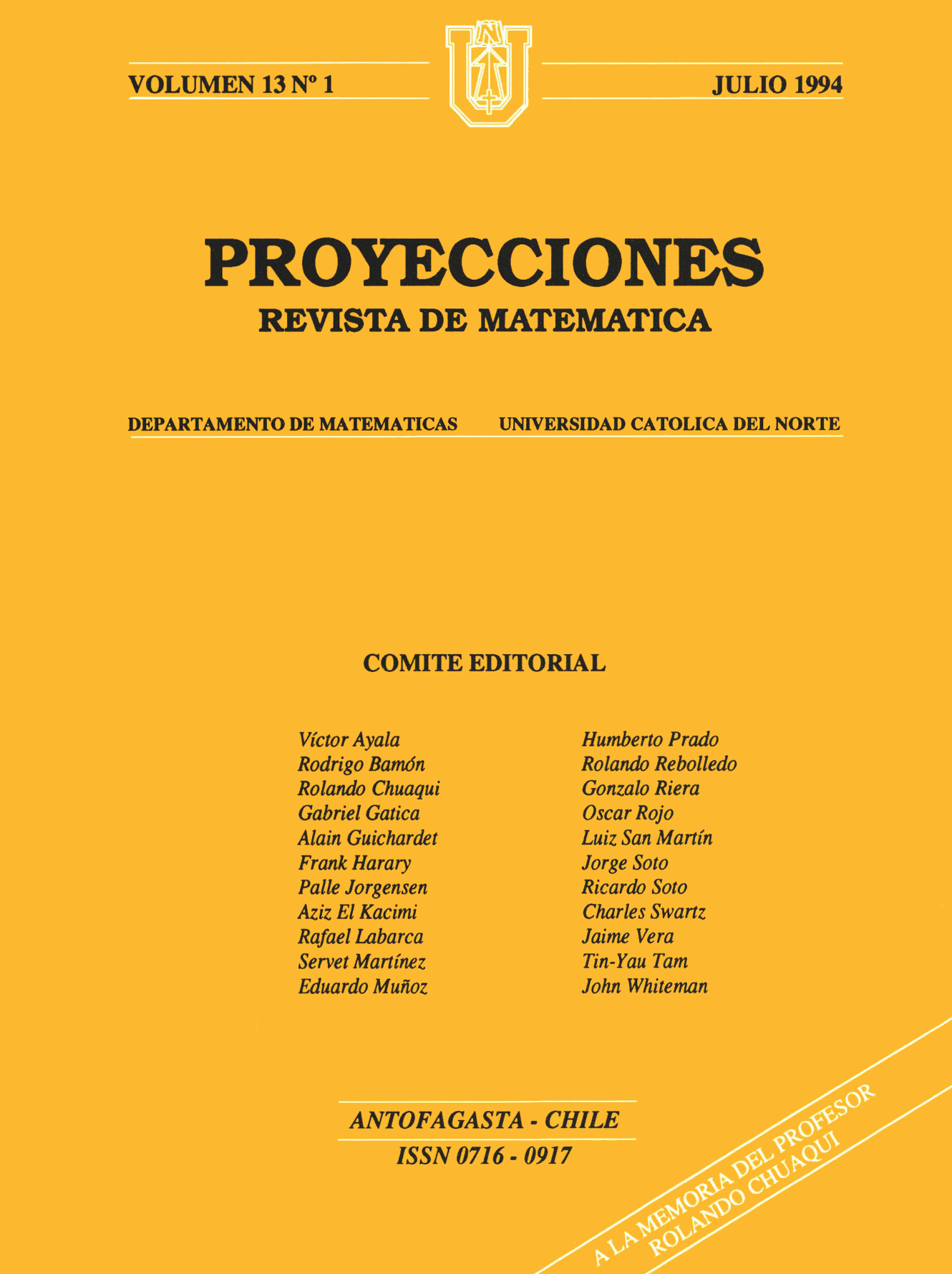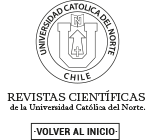Global stability results on an epidemiological model with a core group (a note on the paper "local stability results on a model for typhoid fever with a core group")
DOI:
https://doi.org/10.22199/S07160917.1994.0001.00003Keywords:
Estabilidad global, Fiebre tifoideaAbstract
A SIRS epidemiological model with two subpopulations and vital dynamics is analyzed. Both subpopulations sizes are considered constant by assuming that the birth and the death rates are equal. We consider the case where one subpopulation is a core, that is a very infectious small group, responsible for a big fraction of the incidence. For this case thresholds are determined and the main equilibrium points for the four dimensional system are shown to be globally stable by using a known Theorem of Markus on asymptotically autonomous systems. This system models the dynamics of typhoid fever , where the core is the group of food handlers . The results presented in this work are an extension of those presented in [3].References
[1] E.Beretta; V. Cappaso :·Global stability results for a multigroup SIR Epidemic Model. Proc. of the Autumn Course Reseach Seminars on Mathematical Ecology. ICTP, Trieste 1986.
[2] González-Guzmán,Jorge:An epiderniological model for direct and indirect transmission of typhoid fever. Math.Biosc.96,:33-46, 1989.
[3] González-Guzmán,Jorge ;González -Yánez ,Betsabé: Local Stability Results on a Model for Typhoid Fever with a Core Group. Proyecciones,Vol 12 ;N 2;161-169:(1993)
[4] González-Guzmán,Jorge ;Naulin,Raúl: Analysis of a model of bovine brucellosis using singular perturbations. (Accepted in Journal of Math. Biol. 1994)
[5] H.Hethcote ;J.Yorke: Gonorrhea:Transmission Dynamics and Control. Lecture Notes in Biornathematics .56.Springer Verlag 1984
[6] H.Hethcote :Qualitative analysis of communicable disease models. Math.Biosc .28,:335-:356,1976.
[7] H.Hetthcote :An immunization Model for a Heterogeneous Population . Theoret.Population Biol. .14:338-349 (1978)
[8] H.Hethcote ; H.Thieme : Stability of the Endemic Equilibrium in Epidemic Models with Subpopulations. Math.Biosc.75:205-227(1985)
[9] H.Hethcote ;J .van Ark : Epidemiological Models for Heterogeneous Populations: Proportionate Mixing,Parameter Estimation,and Immunization Programs. Math.Biosc.84:85-118(1987)
[10] D.W.Jordan and Smith , Nonlinear Ordinary Differential Equations,Oxford Univ.Press,1977.
[11] M.Levine ;Catterine Ferreccio;R.Black;Carol Tacket;R. Germanier. Progress in Vaccines Against Typhoid Fever. R.of Infectious Diseases,Vol.ll May-June 1989.
[12] Markus,L. Asymptotically autonomous differential systems . In: Lefschetz,S(ed.).Contribution to the Theory of Nonlinear Oscillations III Princeton Univ.Press 1956.
[13] Thieme,Horst : Convergence results and a Poincare-Bendixon trichotomy for asymptotically autonomous differential equations. J .Math.Biol ( 1 992):30:755-763.
[14] H.R.Thieme,Horst: Global asymptotic stability in epidemic models. Equadiff , Lecture Notes in Math. 1017 , Springer Verlag ,Heildelberg ,1983 , pp. 608-615.
[2] González-Guzmán,Jorge:An epiderniological model for direct and indirect transmission of typhoid fever. Math.Biosc.96,:33-46, 1989.
[3] González-Guzmán,Jorge ;González -Yánez ,Betsabé: Local Stability Results on a Model for Typhoid Fever with a Core Group. Proyecciones,Vol 12 ;N 2;161-169:(1993)
[4] González-Guzmán,Jorge ;Naulin,Raúl: Analysis of a model of bovine brucellosis using singular perturbations. (Accepted in Journal of Math. Biol. 1994)
[5] H.Hethcote ;J.Yorke: Gonorrhea:Transmission Dynamics and Control. Lecture Notes in Biornathematics .56.Springer Verlag 1984
[6] H.Hethcote :Qualitative analysis of communicable disease models. Math.Biosc .28,:335-:356,1976.
[7] H.Hetthcote :An immunization Model for a Heterogeneous Population . Theoret.Population Biol. .14:338-349 (1978)
[8] H.Hethcote ; H.Thieme : Stability of the Endemic Equilibrium in Epidemic Models with Subpopulations. Math.Biosc.75:205-227(1985)
[9] H.Hethcote ;J .van Ark : Epidemiological Models for Heterogeneous Populations: Proportionate Mixing,Parameter Estimation,and Immunization Programs. Math.Biosc.84:85-118(1987)
[10] D.W.Jordan and Smith , Nonlinear Ordinary Differential Equations,Oxford Univ.Press,1977.
[11] M.Levine ;Catterine Ferreccio;R.Black;Carol Tacket;R. Germanier. Progress in Vaccines Against Typhoid Fever. R.of Infectious Diseases,Vol.ll May-June 1989.
[12] Markus,L. Asymptotically autonomous differential systems . In: Lefschetz,S(ed.).Contribution to the Theory of Nonlinear Oscillations III Princeton Univ.Press 1956.
[13] Thieme,Horst : Convergence results and a Poincare-Bendixon trichotomy for asymptotically autonomous differential equations. J .Math.Biol ( 1 992):30:755-763.
[14] H.R.Thieme,Horst: Global asymptotic stability in epidemic models. Equadiff , Lecture Notes in Math. 1017 , Springer Verlag ,Heildelberg ,1983 , pp. 608-615.
Published
2018-04-03
How to Cite
[1]
J. González-Guzmán, “Global stability results on an epidemiological model with a core group (a note on the paper "local stability results on a model for typhoid fever with a core group")”, Proyecciones (Antofagasta, On line), vol. 13, no. 1, pp. 09-17, Apr. 2018.
Issue
Section
Artículos
-
Attribution — You must give appropriate credit, provide a link to the license, and indicate if changes were made. You may do so in any reasonable manner, but not in any way that suggests the licensor endorses you or your use.
- No additional restrictions — You may not apply legal terms or technological measures that legally restrict others from doing anything the license permits.












